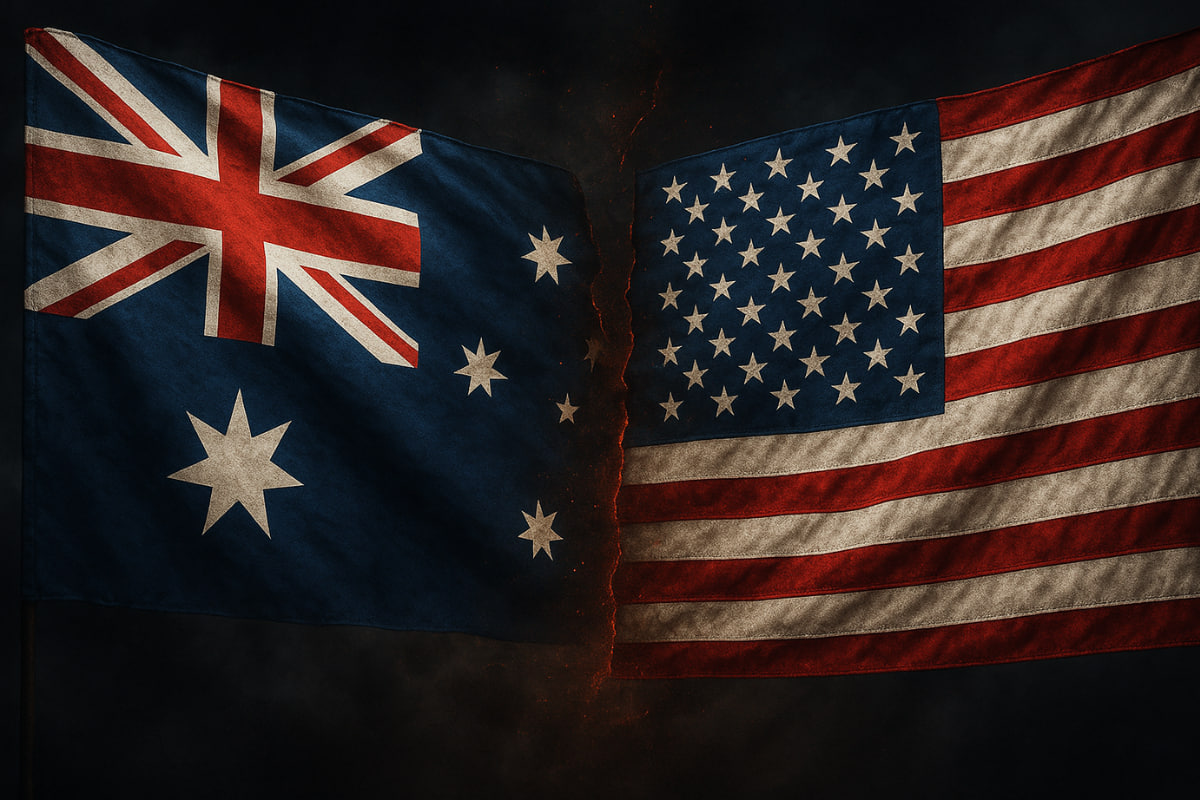In a move that signals growing tensions between two historic allies, the Australian government has announced a set of strategic countermeasures in response to potential new tariffs floated by the administration of Donald Trump, who is currently campaigning for re-election in the United States.
Although no official U.S. tariffs have been implemented yet, leaked documents from Washington, confirmed by The Washington Post, suggest that a second Trump presidency may reinstate broad tariffs on imports—including key Australian exports such as wine, beef, and lithium.
Canberra Responds Swiftly
Australian Trade Minister Don Farrell has called the threats “unwarranted and damaging,” particularly given the long-standing trade cooperation between the two nations. “We are not going to sit idle while baseless tariff threats disrupt regional trade stability,” he stated during a press briefing in Canberra.
The Albanese government has since initiated a three-point response plan:
- Diversification of Export Destinations – Australia has accelerated trade talks with India, the EU, and Southeast Asian economies to reduce dependency on U.S. markets.
- Increased Domestic Subsidies – Key export sectors like agriculture and mining will receive expanded subsidies to mitigate economic shocks.
- Digital Trade Independence – Australia is investing $3.2 billion AUD into AI-driven commerce platforms and local fintech ecosystems to strengthen global trade resilience.
Economic Pushback or Political Signal?
Experts argue that Australia’s reaction is not only economic but also symbolic.
“This is a signal to Washington that Australia is no longer a passive partner,” says Professor Allan Gyngell, a leading foreign policy analyst at ANU. “It’s a quiet but firm stand for sovereignty and fair trade.”
Some insiders suggest that the recent moves are also designed to strengthen Australia’s leadership in the Indo-Pacific, especially as China and the U.S. ramp up their economic influence in the region.
Public Support Grows
Interestingly, the Australian public appears to be behind the government’s tougher stance. A Guardian Essential poll conducted in mid-July shows 68% of Australians support trade diversification, even if it results in short-term price increases.
Margaret Hill, a small winery owner in South Australia, says she’s relieved. “We’ve been relying too heavily on the U.S. market. If this forces us to look to Asia and Europe more seriously, it’s a blessing in disguise.”
The Global Context
The Trump campaign has repeatedly emphasized “America First” economic policies. While the former president has not confirmed a new round of tariffs, his advisors have floated the idea of a universal 10% tariff on all imports—a move that could disrupt global trade dynamics if implemented.
Australia, one of the U.S.’s key allies in the Pacific, finds itself in a difficult position—balancing diplomacy with economic self-preservation.
“We’re not looking for conflict,” said PM Anthony Albanese during a recent ABC interview. “But we will always stand up for Australian workers and industries.”
Sources:
UNSW – https://www.unsw.edu.au/newsroom/news/2025/03/how-us-tariffs-impact-australia-and-what-policymakers-can-do
The Guardian – https://www.theguardian.com/australia-news/2025/jun/30/anthony-albanese-us-trump-tariffs-australia
BBC – https://www.bbc.com/news/articles/c705z2e8wxzo







